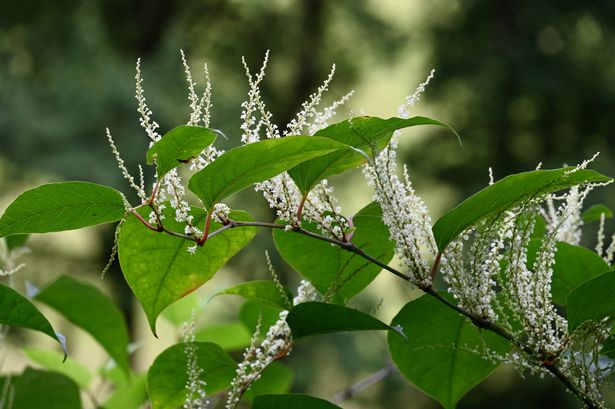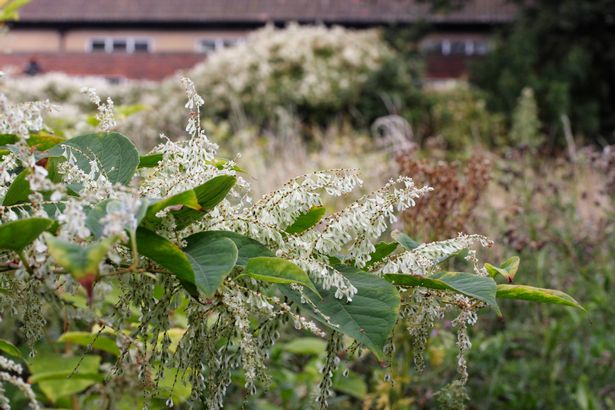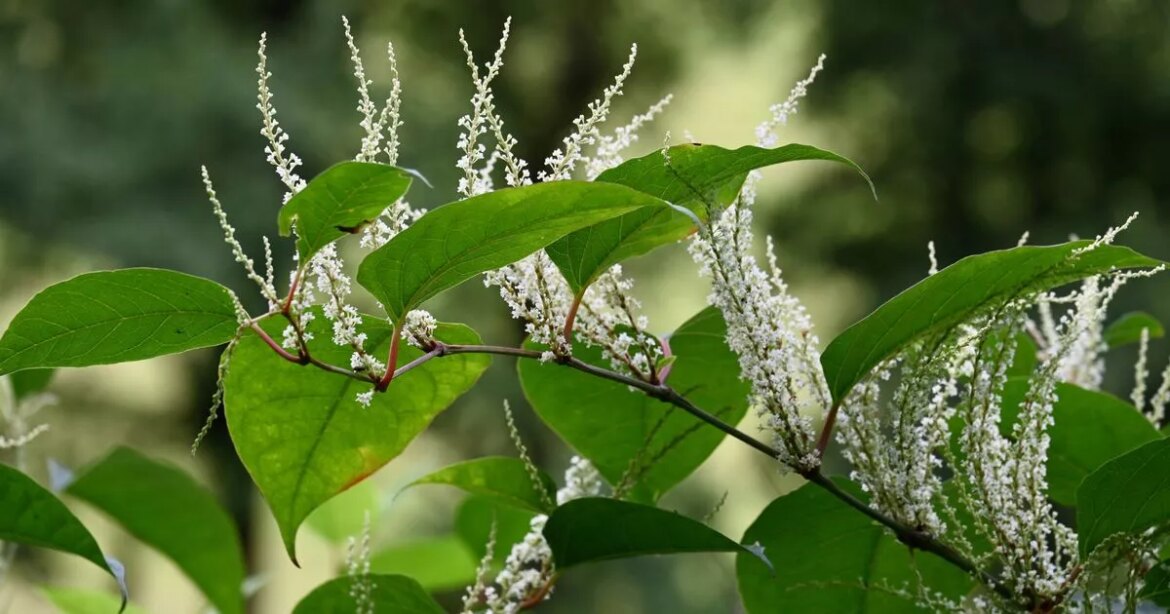Invasive plant specialist Pauraic Larkin warns the infamous Japanese Knotweed will soon become harder to spot in gardens across the country An expert has revealed how to spot Japanese knotweed(Image: joerglondong / 500px via Getty Images)
An expert has revealed how to spot Japanese knotweed(Image: joerglondong / 500px via Getty Images)
Gardeners have been urged to take swift action if they spot ‘small white or cream flowers’ this month. Invasive plant expert Pauraic Larkin cautions that the notorious Japanese knotweed will shortly become more difficult to identify in gardens nationwide.
This occurs because winter conditions diminish the “above ground spread”, even though it continues expanding beneath the surface. Japanese knotweed affects millions of properties throughout both Ireland and the UK annually. Speaking exclusively to Reach PLC, Pauraic outlined precisely why it poses such a threat in gardens and beyond.
He explained: “It is incredibly aggressive and its root system can break through brick, tarmac and poor concrete structures. It has a huge financial impact and spreads like mad. It can destroy building tarmac and concrete, but it can also destabilise foundations, draining systems and river banks.”
November presents an ideal opportunity to address the plant, as blossoms emerge during autumn making identification simpler. Detailing how to recognise it, Pauraic, representing Japanese Knotweed Killers, advised: “The easiest way to check is to look out for the core characteristics.
“It has bamboo-like stems with purple or red speckles, which grow in a zig-zag pattern and can reach up to three metres in height.
“Small white or cream coloured flowers appear in late summer and throughout autumn. In winter the above ground foliage dies back leaving brown brittle hollow stems protruding from the crown.”
 Japanese knotweed is highly invasive
Japanese knotweed is highly invasive
However, it’s not simply a matter of cutting it back, Pauraic explained. “If you were to remove it and place it on un-infected soil, it will sprout new roots and continue to grow in that area as well,” he noted.
“You should report it to a professional. While legally you can have knotweed and leave it, it is illegal to not act to prevent it from spreading to your neighbour’s garden or public areas.”
What makes Japanese knotweed illegal?
According to the European Communities (Birds and Natural Habitats) Regulations 2011, “any person who plants, disperses, allows or causes to disperse, spreads or otherwise causes to grow Japanese knotweed” commits an offence.
Those found guilty of a Class A offence could face fines reaching €5,000 or up to six months behind bars.
For more severe cases on indictment, penalties can escalate to €500,000 in fines alongside potential three-year prison sentences.
Methods for eliminating Japanese knotweed
Proper removal and disposal of Japanese Knotweed requires licensing, and contractors undertaking such work must be aware of this obligation.
Seeking specialist guidance on correct management is advisable initially, especially regarding disposal procedures.
Recommended approaches may include herbicide applications, physical extraction (though this carries risks if fragments contaminate untreated ground) or combining both methods.


Comments are closed.